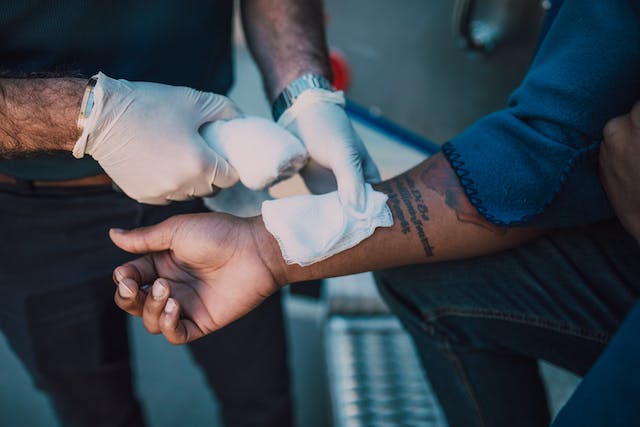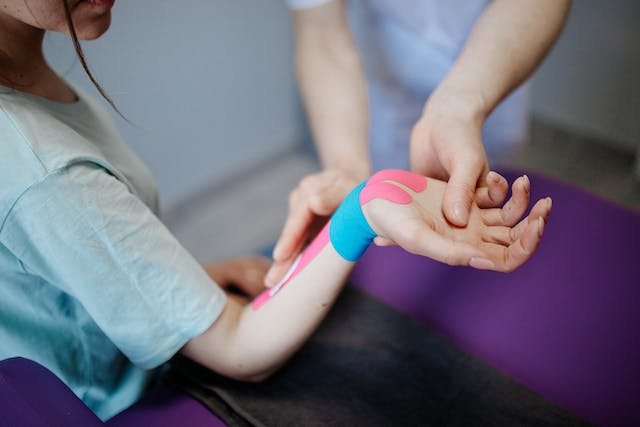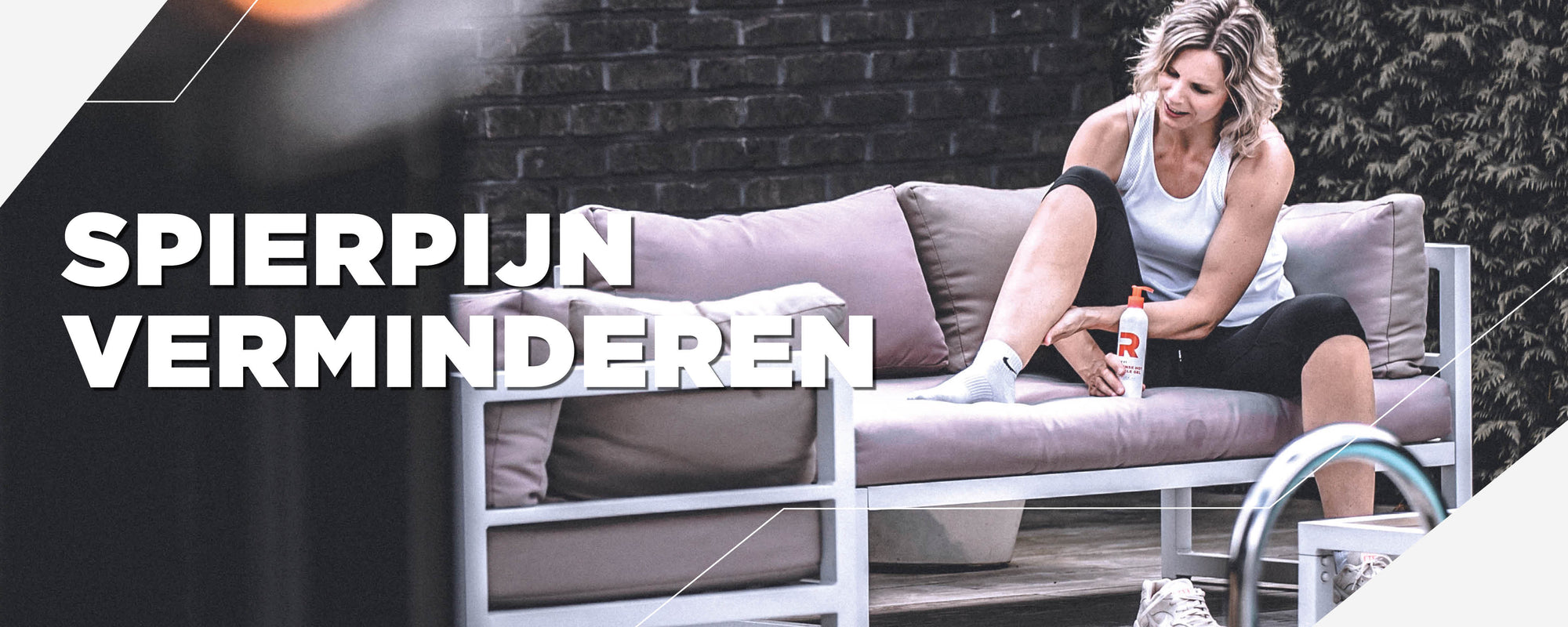This blog will therefore focus on how to apply a pressure bandage and how to apply a wound pressure bandage.
Eat enough good nutrients
A pressure bandage is a type of bandage made of synthetic cotton and a bandage. Pressure bandages are applied to sprains or bruises to prevent swelling. You also have wound pressure bandages. The purpose of these bandages is to stop bleeding and prevent further damage. By using the right materials and techniques, you can provide quick and effective assistance in emergency situations.
Provide the materials required for a pressure bandage
It is smart to have some supplies ready if you need to apply a pressure bandage. For example, a good pair of bandage scissors is very useful. Buy a handy tape and bandage scissors here. It is smart to always have a first aid kit nearby with everything in it, such as bandages in different sizes for treatment of various body parts. For example, a pressure bandage for a knee is ten centimeters long, for an ankle eight centimeters, and for the wrist only six centimeters.
How do you apply a pressure bandage?
In the event of a minor accident, it is important to quickly apply a pressure bandage to prevent swelling. Stay calm and act quickly and appropriately. Buy high-quality pressure bandages here and never be without it again. Below you can read how to apply a pressure bandage to multiple limbs.

Apply a pressure bandage to the ankle
It is easiest to treat the ankle when the angle between the foot and the lower leg is approximately ninety degrees. If this is too painful for the victim, choose the position that is most comfortable for them. Start by distributing the cotton wool around the ankle. The first wrapping should take place around the forefoot. Then rotate two to three times around the forefoot toward the ankle. The previous wrapping must be covered by two-thirds. Also apply a wrap over the center of the heel. Then make two wraps in a figure eight shape, from above the heel to below the heel. Finally, make a number of wraps around the lower leg. Attach the bandage with an adhesive plaster.
Apply a pressure bandage to the wrist
This is how you apply a pressure bandage around your wrist:
- Spread the cotton wool around the hand.
- Apply the first turn of the bandage to the wrist.
- Place the bandage diagonally over the back of the hand.
- Use two to three strokes toward the wrist, covering two-thirds of the previous stroke.
- Finish with two to three more strokes around the wrist.
- Secure the bandage with an adhesive plaster.
Compression bandage around the knee
With a pressure bandage around the knee, it is important that the knee is initially slightly bent. Divide the cotton wool around the knee and start the first wrapping fifteen centimeters below the knee. The next wraps should go towards the knee, covering two-thirds of the previous wrap. At the knee, the wraps at the front should overlap by two-thirds. After a few wraps around the thigh, close the bandage with an adhesive plaster.
Apply a pressure bandage around the elbow
With a pressure bandage around the elbow, the elbow should be slightly bent, just like the knee. Distribute the cotton wool around the elbow and place the first stroke ten centimeters below the elbow. The next strokes should run towards the elbow, covering two-thirds of the previous stroke. At the elbow, the strokes on the bending side should overlap by two-thirds. Seal the bandage with an adhesive plaster after a few strokes around the upper arm.
How do you apply a wound pressure dressing?
A wound pressure dressing should be applied directly to the wound to prevent swelling. Hold the injured body part in a comfortable position and apply a layer of cotton wool around the wound. Place the bandage on the cotton wool and place it with a light pull. However, make sure that the bandage is not too tight. Read more about how to treat a wound here.
How tightly should a pressure bandage be applied?
A pressure bandage should not be applied too tightly, as this can cause engorgement. You can recognize engorgement by discoloration on protruding parts, pain or tingling, and reduced movement of those parts. If this happens, remove the bandage and reapply it with appropriate tension.



